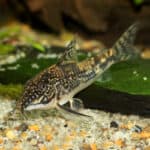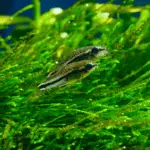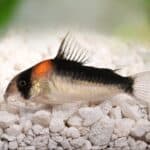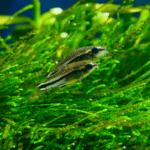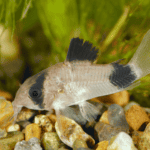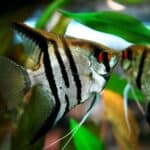Cory catfish and betta fish are two popular species of freshwater fish that many aquarium enthusiasts enjoy keeping. They are known for their beautiful appearances, relatively easy care, and unique behaviors. This article will explore the possibility of keeping these two species together in the same tank, as well as the specific care requirements for each fish to ensure a healthy and harmonious aquatic environment.
Corydoras catfish, also known as cory cats, are bottom dwellers that are peaceful and non-aggressive. They have a unique ability to scavenge for food, which helps maintain a clean tank environment. On the other hand, betta fish are known for their vibrant colors and long flowing fins. Although they can be territorial, their compatibility with cory catfish makes them great potential tank mates. Both species thrive in similar water conditions, with a pH of 7.0 and a temperature around 78 degrees Fahrenheit.
In this article, we will delve into the aspects that make these two species great tank mates, as well as precautions and best practices to ensure a thriving tank environment. By examining their specific needs and tendencies, we can provide helpful guidance for aquarium enthusiasts looking to create a diverse and successful fish community.
Cory Catfish and Betta: An Overview
Species and Origin
Cory Catfish (Corydoras) are a genus of armored catfish native to South America. They are known for their strong armor and are often called armored catfish. They are peaceful, bottom-dwelling fish that prefer living in groups of 6 or more. Cory catfish are efficient scavengers but require a balanced diet, which includes animal protein and vegetation.

Betta Fish (Betta splendens) are a freshwater fish species found in Southeast Asia. They are colorful fish with long, flowing fins, and are well known for their aggressive behavior, especially among males. Despite their aggressive nature, bettas can co-exist with certain other fish species, such as cory catfish, under the right conditions.
Temperament and Behavior
- Cory Catfish: These fish are non-aggressive by nature and are sociable when with their own kind. They can often be observed schooling and foraging the bottom of the tank together. They are unlikely to show aggression towards betta fish.
- Betta Fish: Bettas are infamous for their aggressive behavior, which is mainly directed towards other bettas or fish with similar body shapes and long fins. Their natural habitat consists of shallow puddles, which contributes to their territorial nature. They prefer to remain near the surface of the tank while cory catfish prefer the bottom.
In an aquarium setup, cory catfish and betta fish may co-exist since they inhabit different levels of the tank and display contrasting behaviors. It is important to monitor the interactions between these species closely and ensure that the betta does not exhibit continuous aggressive behavior towards the cory catfish. In extreme cases, a larger tank may be needed or separating the two species may become necessary.
Aquarium Setup
Tank Size and Water Conditions
Both cory catfish and betta fish can thrive in a shared environment under specific conditions. Therefore, an appropriate tank size is vital for compatibility. A tank of at least 10 gallons would be suitable for both species (source). To provide a comfortable environment for both fish, maintain a stable water temperature of 78° degrees Fahrenheit (26° C) and a neutral pH of 7.0 (source).
Substrate and Decoration
When setting up an aquarium for cory catfish and betta fish, consider the substrate and decorations carefully. Cory catfish are bottom dwellers, so a soft substrate like sand or smooth gravel will prevent injury to their delicate barbels.
Add decorations, such as rocks and driftwood, to create an appealing and functional aquarium layout. Driftwood serves as an anchor for live plants and offers additional hiding spots for your fish. A variety of cave-like structures can be achieved by strategically placing rocks in the tank.
Live Plants and Hiding Spots
Incorporating live plants is crucial for a thriving aquarium, as they help improve water quality and provide shelter for both cory catfish and betta fish. Plants like Java Fern, Amazon Sword, and Anubias can be included in a planted tank and are suitable for the required water parameters.
Hiding spots are essential for the well-being of your fish, as they offer refuge and reduce stress. This can be achieved through dense vegetation or additional decorations like caves and dense foliage. Combining live plants and hiding places will provide a balanced environment for both cory catfish and betta fish to coexist peacefully.
Compatibility of Cory Catfish and Betta
Ideal Tank Mates
Cory catfish and betta fish can make excellent tank mates in most cases. This is due to the peaceful nature of the cory catfish and the fact that they inhabit different parts of the tank. The bettas prefer to stay close to the top of the water, while the corydoras catfish are bottom dwellers. Moreover, corys do not have bright colors or long fins, making them less likely to trigger aggression in male bettas.
To keep both species happy, maintain a water temperature of around 78 degrees Fahrenheit, and aim for a pH level of 7.0 to accommodate their slightly different optimal ranges. Proper water parameters ensure a comfortable environment for both bettas and cory catfish.
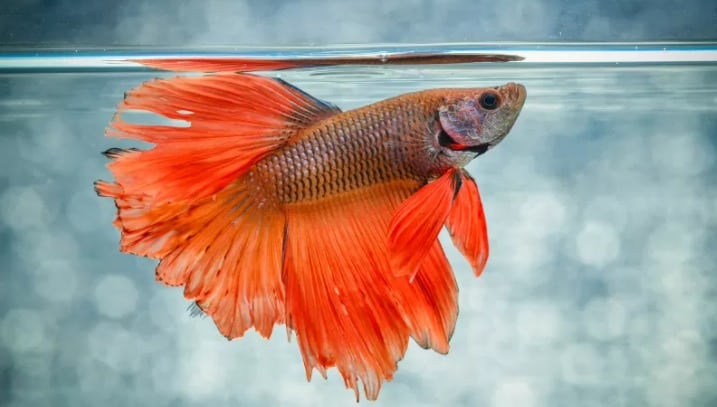
Preventing Aggression and Stress
To prevent aggressive behavior and stress among these tank mates, it is essential to appropriately manage space and habitat requirements. A large enough aquarium (minimum of 20 gallons) is necessary to give both species space to swim without territorial conflicts. Providing ample hiding spots, such as caves or plants, can also offer the fish some sense of security and places to retreat if needed.
In addition to their habitat, make sure to avoid overcrowding. A community tank with too many fishes can cause stress and result in aggressive behavior from male bettas. On the other hand, corydoras catfish are sociable and friendly, so they should be kept in small groups of 5-6 individuals to ensure they thrive.
| Tips for Harmonious Tank Mates | |
|---|---|
| Water temperature | 78°F |
| pH Level | 7.0 |
| Aquarium Size | Minimum 20 gallons |
| Corydoras Catfish Group | 5-6 individuals |
| Adequate Hiding Spots | Yes |
Keep in mind that individual fish may have unique personalities, and not all bettas and cory catfish will be compatible. Monitoring their behavior and being proactive about mitigating aggression and stress will lead to a more harmonious community tank.
Diet and Feeding
Optimal Food Choices
Cory catfish are omnivores and require a mix of both meat and plant-based food. Ideally, their diet should consist of:
- Flakes and nutritional pellets: These are the staple foods for cory catfish, providing an essential mix of nutrients.
- Algae wafers: These sinking wafers help fulfill their plant-based dietary requirements and also cater to their bottom feeder behavior.
- Live and frozen foods: These can include brine shrimp, daphnia, and bloodworms, which provide a source of protein and add variety to their diet.
- Vegetables: Small pieces of blanched vegetables like zucchini, cucumbers, and spinach can be occasionally offered for additional nutrition.
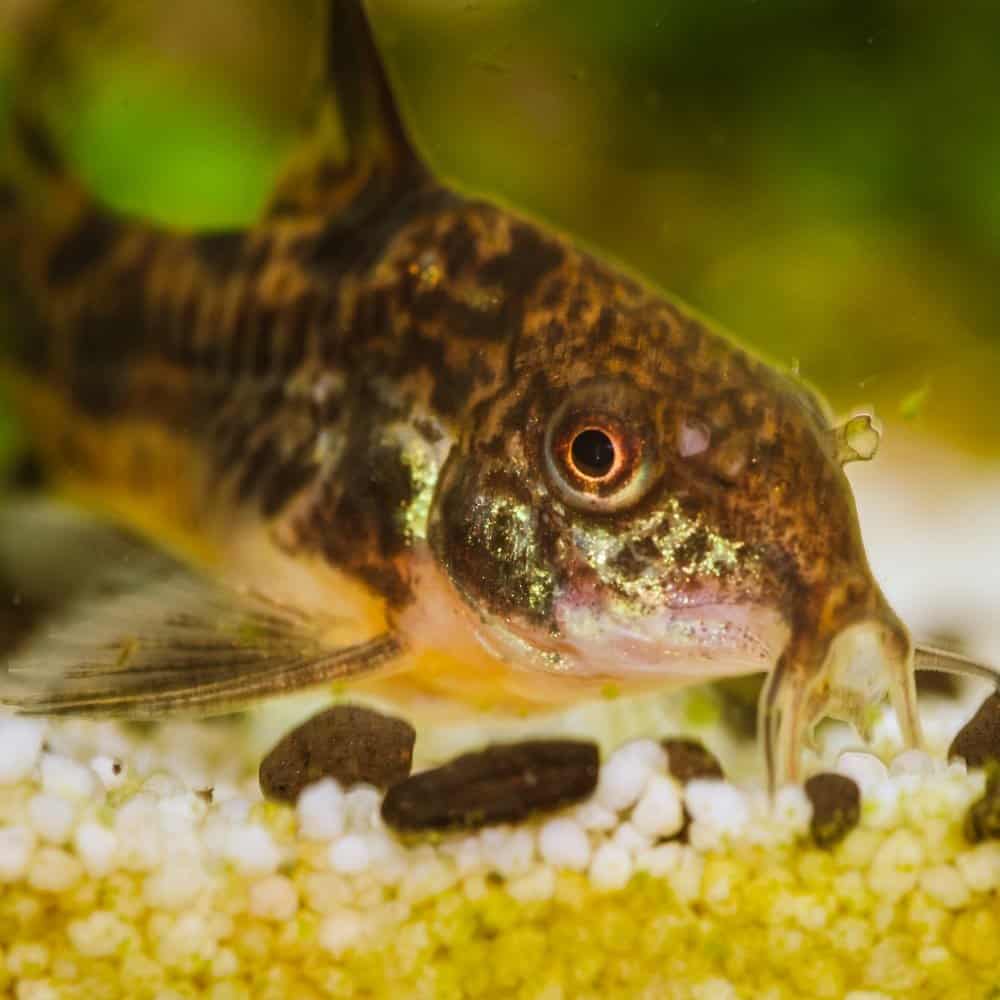
Betta fish, on the other hand, are carnivorous and their diet should primarily consist of meat-based food:
- Insect-based pellets or flakes: These should be the primary source of nutrition for betta fish, providing a well-rounded diet.
- Live and frozen foods: Treats like brine shrimp, daphnia, and bloodworms can be fed occasionally as a supplement to their staple diet.
Feeding Schedule and Techniques
Cory catfish and betta fish have different feeding habits and schedules:
- Cory catfish: Feed them small amounts of food 1-2 times per day. Ensure you provide enough sinking pellets or wafers, as they are bottom feeders and prefer foraging at the tank’s bottom.
- Betta fish: Feed betta fish once or twice daily, offering them small portions they can finish in 1-2 minutes. Overfeeding can be detrimental to their health and water quality.
When keeping these two species in the same tank, it’s important to make sure both of their dietary needs are met. Since betta fish are surface feeders and cory catfish are bottom feeders, providing the right food at their preferred feeding level will reduce competition for resources.
Avoid overfeeding, as this can negatively affect water quality and the health of the fish. To prevent this, observe their feeding habits and ensure each species is receiving the right amount of food. Remove any uneaten food from the tank after feeding time to maintain a clean environment for your fish.
Health and Disease
Common Diseases
Cory catfish and betta fish are generally hardy species, but they can still fall victim to various diseases when their tank environment is not properly maintained. Some common diseases that can affect both species include:
- Fin rot: Caused by bacteria, this condition affects the fins of the fish, making them appear ragged and deteriorating. It is important to maintain proper water parameters and prevent ammonia buildup to avoid this disease.
- Ich: This parasitic disease presents itself as white spots on the fish’s body and fins. It can be treated using over-the-counter medications designed specifically for ich. Maintaining proper water conditions is vital to prevent the parasites from thriving.
For both species, it is crucial to maintain water parameters such as pH, temperature, and nitrate levels. A pH of 7.0, a temperature of 78°F, and nitrate levels as close to 0 ppm as possible are ideal for cory catfish and betta fish.
Quarantine
Introducing new fish to a tank can be a risk, as they may carry diseases or parasites. To ensure the health of your cory catfish and betta fish, quarantining newcomers is a wise practice. A quarantine tank should be separate from your main tank, with the following parameters:
- Origin: Ensure that the new fish come from a trusted source that follows proper health protocols.
- Tank setup: Set up the quarantine tank similarly to your main tank, including proper filtration, heating, and hiding spots.
- Duration: Keep newcomers in quarantine for a minimum of 2-4 weeks, observing them for any signs of disease or distress.
Should any health issues arise during quarantine, treat the fish accordingly before introducing them to the main tank.
Treatment
When treating sick fish, it is essential to identify the problem and administer the appropriate medication or treatment:
- Barbels: Cory catfish have delicate barbels that can be damaged or infected if the tank floor is too rough. Provide a soft sand substrate to prevent injuries to their barbels.
- Bacteria: For bacterial infections like fin rot, over-the-counter antibiotics can be effective. Follow the provided instructions and dosage guidelines.
- Pygmy cory: This specific species of cory catfish can be more sensitive to disease; therefore, they may require extra care and attention when treating any health issues.
By maintaining proper water conditions, quarantining new fish, and treating diseases promptly, you can ensure the continued health and wellbeing of your cory catfish and betta fish.
Breeding Cory Catfish and Bettas
Corydoras Breeding Process
The breeding process of Corydoras catfish starts with setting up a dedicated breeding tank. The tank should have wide leaf plants to provide space for spawning, and make sure it is covered to prevent fish from jumping out.
- Conditioning your fish: Feed the cory catfish with a high-quality diet consisting of flake food or frozen options like brine shrimp or daphnia, to prepare them for breeding.
- Simulating dry season: Maintain consistent water temperature and conditions within the tank during a simulated dry season.
- Simulating raining season: Increase water changes frequency or add cooler water to the tank to stimulate rain, triggering spawning behavior.
Once the spawning process is complete, you may notice clusters of tiny eggs stuck to plant leaves or the sides of the tank. It’s essential to take the eggs out of the tank to hatch them separately as adult Corydoras may eat their own eggs.
Regarding pygmy Corydoras, the breeding process is very similar. However, they are smaller and more sensitive, so extra care in maintaining ideal water parameters is necessary.
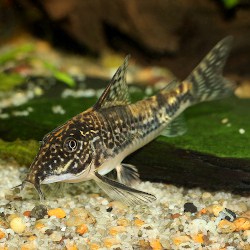
Betta Fish Breeding Process
- Selecting a breeding pair: Choose healthy, mature bettas (between 4-12 months old) with vibrant colors. Observe their behavior and compatibility.
- Setting up a breeding tank: Set up a separate tank with shallow water (about 6 inches deep) at around 80°F (27°C) and provide hiding places for the female.
- Conditioning the pair: Feed the bettas a high-quality, protein-rich diet (frozen bloodworms or brine shrimp) for 1-2 weeks prior to breeding.
- Introducing the pair: Place the breeding pair together in the tank. The male will build a bubble nest, and once ready, will entice the female to the nest. They will embrace, and the female will release eggs that the male will fertilize before moving them into the nest. After spawning, remove the female from the tank.
- Egg hatching and fry care: Monitor the eggs and ensure proper water quality throughout the hatching process (24-48 hours). Once the fry are free-swimming (3-4 days post-hatch), move the male from the tank and start feeding the fry with infusoria or liquid fry food.
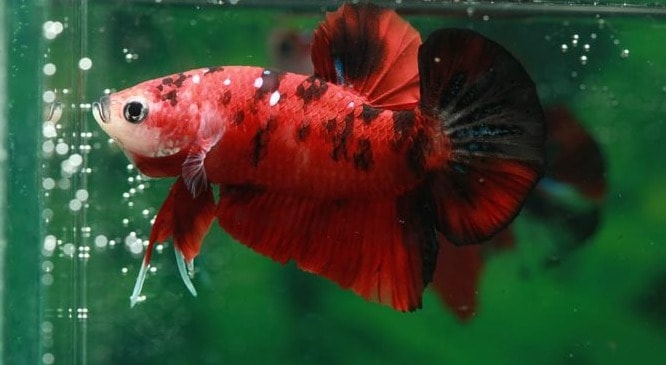
Note that black and green bettas can be bred in the same process, as their color variations do not affect the breeding process itself. The average lifespan of a betta fish is 2-5 years when cared for properly.
Please remember that Corydoras catfish and betta fish cannot breed with each other since they are entirely different species. Their breeding processes are unique, and their compatibility is only as tank mates.
Conclusion
In conclusion, it is possible to keep cory catfish and betta fish together in the same tank, depending on factors such as the temperament of the betta fish, tank setup, and the specific species of cory catfish. However, it is essential to monitor the behavior of betta fish closely, as they can be aggressive, and check compatibility with the chosen cory species.
To set up a tank that is suitable for both fish, ensure that the water temperature is maintained between 70 to 78 degrees Fahrenheit and the pH level is between 7 to 7.8. Consistent water conditions are vital for the well-being of cory fish. Furthermore, proper filtration is essential in maintaining a clean and healthy environment for both fish.
When it comes to diet, betta fish and cory catfish can eat similar foods. However, to ensure that both fish species receive adequate nutrition, it is important to provide a balanced diet tailored to their specific needs.
Lastly, it is important to stay informed and continually learn about the specific needs and behaviors of cory catfish and betta fish. This will provide a better understanding of how to foster a thriving, peaceful, and co-existing environment for both fish species within the tank.

